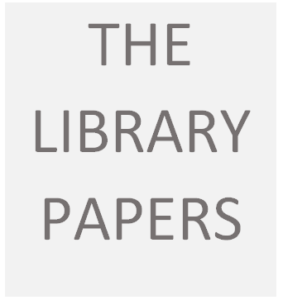1.3 Navigating Critical Literacy
Definition
Critical thinking involves making judgments based on reasoning: students consider options; analyze these using specific criteria; and draw conclusions and make judgments. Critical thinking competency encompasses a set of abilities that students use to examine their own thinking, and that of others, about information that they receive through observation, experience, and various forms of communication. (BC Critical Thinking Competencies )
Critical literacy requires readers to move beyond a basic understanding of a text (i.e. “basic literacy”) to take an evaluative view, or what could be called a metacognitive view, of the text in its context. To help students develop this metacognitive view, they need to be guided to look at the text from a variety of perspectives:
- they need to see how a given text compares to other similar texts
- they need to examine how it is used and viewed by others (social uses) (Roberge, Coffey, Dunkerly-Bean and Bean)
- they need to understand how their own knowledge, experience and attitudes affect their understanding of the text (Hayes, Coffey, Davis)
- and they need to explore how the given text has been constructed (Bird).
(I use the heuristic of looking “beside, above, below, and behind the text” as the organizing principle to ensure I’ve given considered attention to each of these perspectives.)
Here is a video on the topic (scroll down to the player bar and click the ‘play’ arrow):
Finally, there is an expectation that individuals will be changed by this critical examination of the text (i.e. that they will learn from it) and that they will use this knowledge to guide their actions in future (BC Critical Thinking Competencies document), and there is a further implication/hope that their future actions will be fair minded, balanced and have integrity (Coffey, Davis, Roberge).
Level: Grades 6-9
Subject: English, English Language Arts
Big Idea:
Students will choose two from among several options to present their memoirs; then compare and analyse the results; draw conclusions and make judgments about which format worked best for telling the story they wanted to tell.
Critical Thinking Competencies:
Analyze and critique; develop and design
The task:
- Choose two different presentation tools from the list below to present your memoir (see my examples below):
- PowerPoint slideshow
- Graphic story
- Poster—digital (Glogster) or drawn
- Text document
- Voice recording
- Video recording of a live performance
- Animated story (Powtoon)
- Now compare the two formats and decide which one worked best to help you tell the story the way you wanted to tell it. Write up the results of your experience. To do this you will first need to generate criteria to compare. The criteria you use will depend on what information you need to compare. Here are some criteria I used to evaluate my presentations:
| PowerPoint | PowToon | |
| 1. Images | Yes | Yes |
| 2. Sound | Yes | Yes |
| 3. Video | Yes | Yes |
| 4. Open source content (can I import my own content, or do I need to use the content given by the program?) | Yes | No |
| 5. Ease of use (how long did it take to tell the story?) | 4/10 | 6/10 (but maybe because this is the first time I used PowToon) |
| 6. How happy am I with the result? | 5/10 | 8/10 |
| 7. Which one was the most fun? | PowToon was easier to work with, and I am happier with the results. | |
3. Now write a paragraph explaining which presentation tool you prefer and why.
The Day I Turned 4: Told Twice, Using PowToons and PowerPoint
(scroll down to the player bars and click the ‘play’ arrows)
PowToons Version:
PowerPoint Version:
Works Cited
BC Government: https://curriculum.gov.bc.ca/sites/curriculum.gov.bc.ca/files/pdf/CriticalThinkingCompetencyProfiles.pdf
Bird, E. (2014, August 1). Wikipedia, Amelia bedelia, and our responsibility regarding online sources. [Blog post]. Retrieved from http://blogs.slj.com/afuse8production/2014/08/01/wikipedia-amelia-bedelia-and-the-responsibility-of-online-sources/#
Coffey, H. (n.d.) Critical literacy. Retrieved from http://www.learnnc.org/lp/pages/4437
Davis, H. (2010, February 3). Critical Literacy? Information! [Blog post]. Retrieved from http://www.inthelibrarywiththeleadpipe.org/2010/critical-literacy-information/
Dunkerly-Bean, Judith; Bean, Thomas W. Exploring human rights and cosmopolitan critical literacy with global young adult literature multimodal text sets. New England Reading Association Journal50.2 (2015): 1-7,90-91.
Hayes, D. (2014, August 9). Let’s stop trying to teach students critical thinking.
Retrieved from http://theconversation.com/lets-stop-trying-to-teach-students-critical-thinking-30321
Roberge, G (2013, June). Promoting critical literacy across the curriculum and fostering safer learning environments. What works? Research into Practice, Ontario Ministry of Education. Retrieved from http://www.edu.gov.on.ca/eng/literacynumeracy/inspire/research/WW_PromotingCriticalLiteracy.pdf
Image Credits (PowerPoint Slideshow)
http://www.juicylucydesigns.com/products/happy-happy-happy-4th-birthday (accessed October 30 2016)
https://www.pinterest.com/mgeorgitsis/birthday-cupcakes/ (accessed October 30 2016)
http://www.furnitureteams.com/98c3f73dcb5d898b.html (accessed October 30 2016)
https://www.pinterest.com/pin/277112183291222099/ (accessed October 30 2016)



